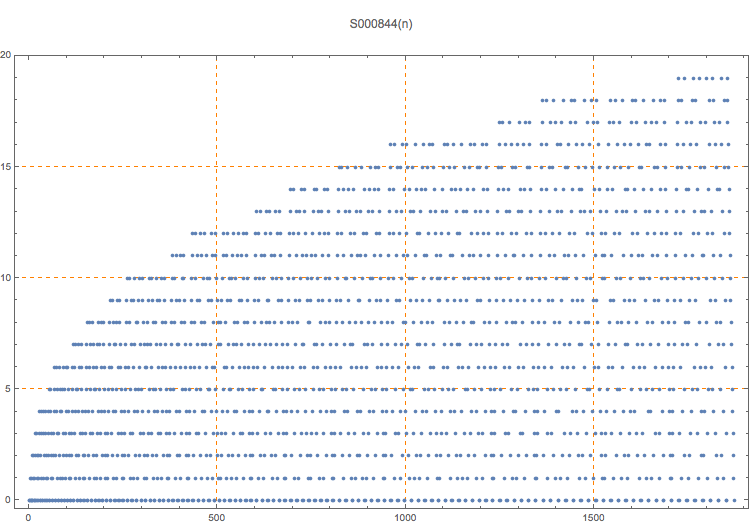Regular star-polytopes having n sides.
0, 0, 0, 1, 0, 0, 1, 2, 0, 0, 2, 1, 0, 0, 1, 2, 3, 0, 0, 3, 2, 1, 0, 0, 1, 2, 3, 4, 0, 0, 2, 4, 1, 3, 0, 0, 3, 1, 4, 2, 0, 0, 4, 3, 2, 1, 0, 0, 1, 2, 3, 4, 5, 0, 0, 5, 4, 3, 2, 1, 0, 0, 1, 2, 3, 4, 5, 6, 0, 0, 2, 4, 6, 1, 3, 5, 0, 0, 3, 6, 2, 5, 1, 4, 0, 0, 4
1
Each polytope begins and ends with 0. For each n, we list all polytopes. For completeness, the first two entries are for a point (0,0) and a line (0,1,0). The book by Conway et al has a few drawings of these figures on page 404. See the previous S000843 for a link showing half of these polytopes.
T. D. Noe, Plot of 1873 terms (first 20 rows)
T. D. Noe, Table of 1873 terms (first 20 rows)
John H. Conway, Heidi Burgiel, and Chaim Goodman-Strauss, The Symmetries of Things, A. K. Peters, 2008.
(Mma) Flatten[Join[{0, 0}, Table[d = Flatten[Position[Table[GCD[i, n], {i, n}], 1]]; Table[Table[Mod[j*i, n], {i, 0, n}], {j, d}], {n, 2, 10}]]]
nonn,tabf
T. D. Noe, Feb 02 2016
